Dear Artist,
Rumour has it that when J.D. Salinger died in 2010 at the age of 91, his heirs found an elaborate filing system in his Cornish, New Hampshire writing shed. Though he’d stopped publishing in 1965, Salinger continued quietly working for what he described as his own pleasure, free of the “damned interruption” of publishing for an audience. There were, according to his neighbour, 15 unpublished novels in his shed. But Salinger hadn’t entirely abandoned the idea of a public destination for his ideas. His daughter, Margaret, described discovering his system of marks in red and blue, with red meaning, “if I die before I finish, publish this ‘as is,’” and blue meaning, “publish, but edit first.”
The rabid fans his debut novel, The Catcher in the Rye created, plus the PTSD he suffered from after landing on Utah Beach on D-Day and liberating a Nazi concentration camp steered Salinger toward the teachings of Buddhism and the isolation of a cabin in Cornish. After his yogi guru promised enlightenment by way of family life, Salinger married his second wife, Claire and had two kids. Ultimately, he defaulted to a singularly-focussed seclusion and maintained it until his death.
Here in 2020, artists can quietly slip into their own sheds without much consternation. Unlike Salinger’s rejection of the world, however, or the angst of Holden Caulfield — the alienated, misanthropic hater of phonies trying to get through the Christmas break in The Catcher in the Rye — consider your retreat as the proactive receiving of a gift. Embrace the scarcity of social amusements while appreciating the specialness of them — and any lack of destination or attention for your work as a golden opportunity for its development. “Are you willing to write without the expectation of anything in return?” asked Salinger’s mentor, the publisher Whit Burnett, in Danny Strong’s 2017 biopic, Rebel in the Rye. “Then, you are a writer.”
Sincerely,
Sara
PS: “It is my rather subversive opinion that a writer’s feelings of anonymity-obscurity are the second most valuable property on loan to him during his working years.” (J.D. Salinger)
Esoterica: Like many of you, I read The Catcher in the Rye when I was in high school. When I asked my friend, an English teacher about the book recently, she told me the kids are still reading it, though they no longer worship Holden as an anti-hero, but rather, merely diagnose him with anxiety and depression. J.D. Salinger struggled with PTSD and was also, by all accounts, a neglectful husband and father, plus unforgiving, litigious, uncompromising and a belligerent recluse. The Catcher in the Rye, published in 1951, redesigned the modern novelistic form, partly because of its first-person 1940s vernacular, narrated by a traumatized teenage protagonist. It was named by Modern Library as one of the 100 best English-language novels of the 20th century and has sold over 65 million copies, with one million books still sold annually, worldwide. Between 1961 and 1982, Catcher was also the most censored book in high schools and libraries in the United States — said to inspire violence, sexual promiscuity, blasphemy and for being part of a communist plot.
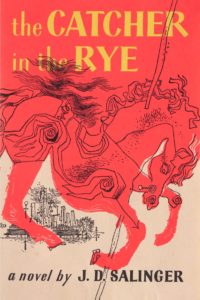
Cover illustration for The Catcher in the Rye, First Edition, 1951
by J.D. Salinger’s neighbour, E. Michael Mitchell
Kenneth Slawenski’s 2010 biography, J. D. Salinger: A Life is here.
Danny Strong’s 2017 biopic, Rebel in the Rye is available to stream, here.
Have you considered a Premium Artist Listing? With each letter, an artist is featured at the bottom of this page. The Premium Artist Listings are a means of connecting artist subscribers through their work. Proceeds from each listing contribute to the production of The Painter’s Keys.
“There is a marvelous peace in not publishing. I like to write. I love to write. But I write just for myself and my own pleasure.” (J.D. Salinger)
Featured Workshop
You know your paintings are good but you want them to be great. You want to be able to connect to a deeper source within you and then put that onto your canvas or paper.
To become aware of your depth, calm and genius that lives within your heart.
You will discover ways to go within your heart and soul in order to tap onto that special energy that is yours and yours alone.
This workshop will be a live virtual event. I will be there with you during the entire four days. I can’t wait as I am excited. Please email me if you have any questions….gwen@gwenfox.com
September 14 – 17, 2020, Location…Online
Register here: https://gwenfox.com/retreat/painting-deep-from-the-heart/

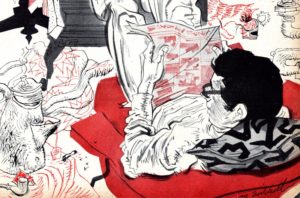
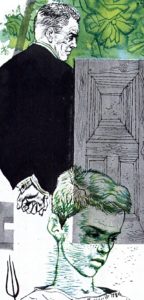
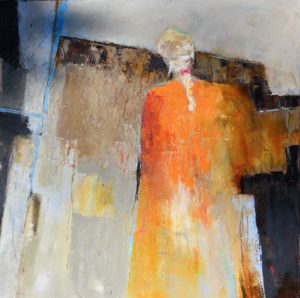
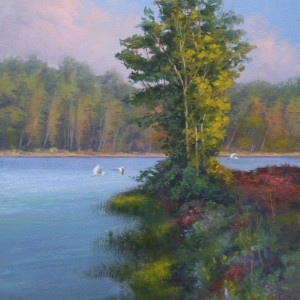



13 Comments
My approach to painting too. Can never figure out what the public wants anyway
I don’t bother trying to know what the public wants. It is never what is good for them.
When I read Catcher–, probably about 1962 or 3– I thought it was over-rated, and my opinion has not changed. But I didn’t care much for On The Road either.– which I read earlier. Franny And Zooey remains for me the most interesting work of the early period of my reading. But then I also thought Ginsberg was an inconsequential writer– being predominantly a social activist– and preferred the much sloppier Ferlinghetti whose poetic soul was often shrouded in more mundane things.
I read Catcher in 1973 in 10th grade English. I remember that the teacher made a big deal about it; I don’t remember being told it was a censored book. Thought it was awful then, tried to reread it a few years ago, got half way, threw it in the trash. Bleah! Held no beauty for this beholder. But we’re still talking about it, so I guess there’s the accomplishment.
I couldn’t agree more. I read it in my twenties and couldn’t understand why so much had been made of it. I tried reading it again thirty years later and my opinion hadn’t changed, didn’t even bother to finish it. But, as you say, they’re still talking about it, and him. But then they talk about the Kardashians too, and will probably continue to do so for many years yet (unfortunately)!
“Are you willing to write without the expectation of anything in return?” asked Salinger’s mentor, the publisher Whit Burnett, in Danny Strong’s 2017 biopic, Rebel in the Rye. “Then, you are a writer.”
In other words, are you prepared to be superhuman, live on air, and hope only that someone will find your manuscript/canvas in a bottle floating out to sea?
I think this is damagingly romantic “encouragement” to any artist. It is reflective of the art-for-art’s-sake thinking of young early-nineteenth-century writers, most of whom had small but vital incomes that allowed them such frivolous thoughts. Not that I think art should pay for itself. But art is communication; if the artist is honest he/she wants to be recognized; and a necessary day job is the only way to keep artistic aims and values “pure” of the marketplace.
Good point, Barbara. I find that visual art is something I can do more for myself, without worrying about who will see it (maybe because my skills are pretty limited), but when I write I have to keep an audience in mind and a goal of getting my writing to them, at least eventually.
Creating art without regard for the outcome is an attitude not a business plan. This attitude will open up the streams of creativity and allow you to do your purest work. Then you must also be about some kind of a business plan if you wish to have art supplement your income or be your income.
I look forward to reading his unpublished works.
Since March, when covid-19 shut everything down and I triple fractured my ankle on a dog walk woods, I’ve created art of all kinds without regard to outcome or where they would take me. Once I got back on my feet in June, I hobbled over to my backyard studio ‘The Hildegard’ and have been working on a few different series. Art is my place of sanity, serenity and healing. Turning a complicated time into an opportunity. Axo
Andrea, I am amazed that I have had a spring/summer experience very similar to yours. As the covid-19 was closing things down, I broke a bone in my foot while walking my dog. So I am supposed to stay off the foot for about 6 weeks and use a kneescooter to get around. I don’t mind, as it gives me more time to stay at the easel and try out new styles and painting mediums. I am adopting Salinger’s theory that I will not paint to please anyone but myself and may not show any of my work to anyone.
I like the thought behind this: “consider your retreat as the proactive receiving of a gift (a go to your room idea, thank you dear Robert)” and “quietly slip into their own sheds without much consternation” to produce what makes the producer satisfied with her creations for herself and to herself. This advice is insightful and worth following. After all, this is most important, isn’t it….loving what you do and not being overly concerned about what others think?
Thank you for the constantly thoughtful letters. And I love the discussion by the readers that follows.
Claudia